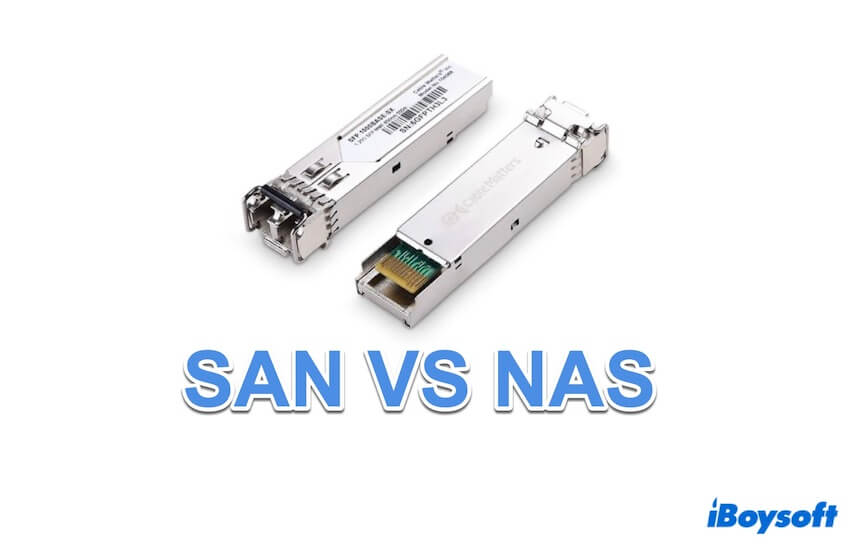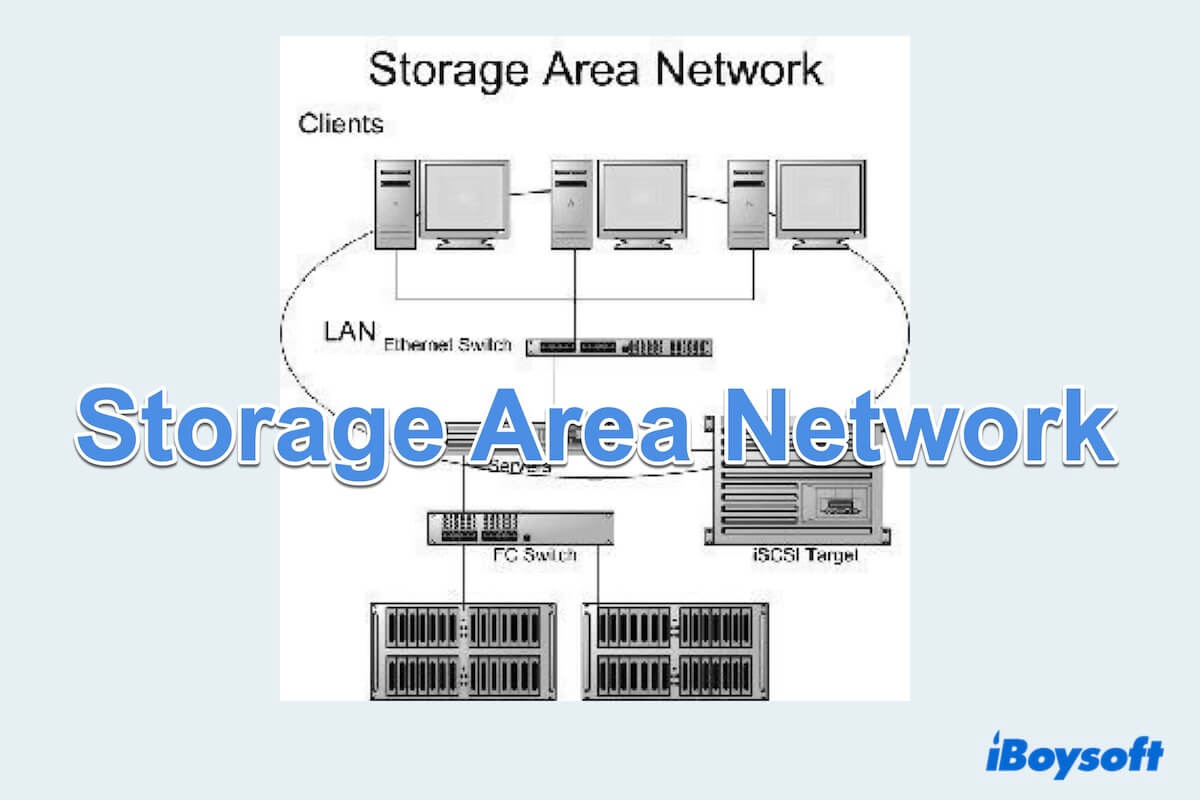Storage Area Network(SAN) is a system of interconnected storage devices accessible to numerous servers or computers, creating a communal reservoir of storage capacity. Every computer within the network can retrieve storage from the SAN, mimicking the experience of accessing local disks directly connected to the respective computer.
In the realm of modern data management, Storage Network has emerged as a pivotal technology, revolutionizing the way organizations store, access, and manage their data. Also, other storage choices like NVMe, DAS, and NAS...are placing pressure on Storage Area Networks.
What is a SAN Storage Area Network? Continue reading and find your wanted things to choose a more suitable storage.
SAN examples
There are various examples of types of Storage Area Networks, each designed to cater to specific needs and requirements. SAN Storage applies common protocols to do data transportation:
- Fibre Channel Protocol(FCP): It utilizes Fibre Channel technology for transmitting SCSI commands to establish high-speed and swift connections between storage devices and servers.
- Internet Small Computer System Interface(iSCSI): It leverages standard Ethernet networks to transmit SCSI commands over IP, employed by approximately one-tenth of enterprises, providing a cost-effective alternative.
- Non-Volatile Memory Express Over Fibre Channel(FC-NVMe): It is an interface protocol for accessing flash storage via a PCI Express bus by enabling tens of thousands of parallel queues.
- Fibre Channel over Ethernet(FCoE): It ingeniously integrates FCP onto a new physical lime, especially an Ethernet link, eliminating the necessity for separate LAN and SAN networks.
Additionally, there are converged SANs that combine traditional Storage Networks with data networking capabilities, ensuring a versatile and adaptive storage environment. What other examples of SAN do you know? Share and leave your answers~
Advantages and disadvantages of SAN
Storage Area Network comes with a host of advantages that contribute to their widespread adoption in the enterprise environment, but like any technology, SAN Storage also has its drawbacks. Let's have a look and learn the main things when needing to make a choice.
Advantages of Storage Area Network:
- Enhanced performance: SANs offer high-speed data transfer rates and low latency, providing rapid access to store data, which is important for applications and systems that require quick and efficient data retrieval.
- Centralized management: SANs enable centralized management of storage resources. Administrators can efficiently allocate, configure, and monitor storage from a single point, simplifying the management process.
- Scalability: The Storage Area Network is highly scalable, allowing organizations to easily expand storage capacity as their data requirements grow. This scalability ensures that the storage infrastructure can adapt to changing business needs.
- Improved data availability: SAN Storage can incorporate features such as redundant components and data replication, enhancing overall system availability, which helps minimize downtime and ensures continuous access to critical data.
Disadvantages of Storage Area Network:
- Initial setup cost: Implementing a SAN involves investment in specialized hardware, software, and skilled personnel, making it a substantial financial commitment.
- Complexity: It is complex to design, implement, and manage a SAN, which needs rich knowledge, especially for those without experienced IT staff.
- Limited Flexibility: Changes to the SAN may require significant effort and potentially result in downtime. This limitation can be a disadvantage for frequent reconfiguration.
- Dependency on network infrastructure: Issues such as network congestion or failures can impact Storage Area Network performance.
Therefore, while Storage Area Network offers numerous advantages, you must carefully consider the associated costs, complexity, and potential drawbacks when using an SAN.
What is the difference between SAN and NAS?
Both Storage Area Networks (SAN) and Network-Attached Storage(NAS) are centralized storage management solutions, that distribute data to multiple servers. However, NAS is more abstract than SAN.

| SAN | NAS | |
| Organize data ways | SAN stores data in blocks organized into logical unit numbers(LUNs). | NAS organizes storage into files, folders, and volumes managed by a central unit, ensuring data independence from connected devices. |
| Share data ways | A dedicated network | A shared network |
| Transform data ways | Both Ethernet and Fibre Channel | Ethernet |
The strengths of each approach also differ. Storage Network prioritizes high performance and minimal latency, while NAS emphasizes user-friendliness, ease of management, scalability, and cost-effectiveness.
Have you chosen your wanted one? Share to help more people.
Conclusion
In summary, Storage Area Networks have become integral components of modern data infrastructures, offering a robust and efficient means of managing and accessing large volumes of data. As technology continues to advance, SANs will likely evolve to meet the ever-growing demands of data-intensive environments, playing a crucial role in the digital landscape.
